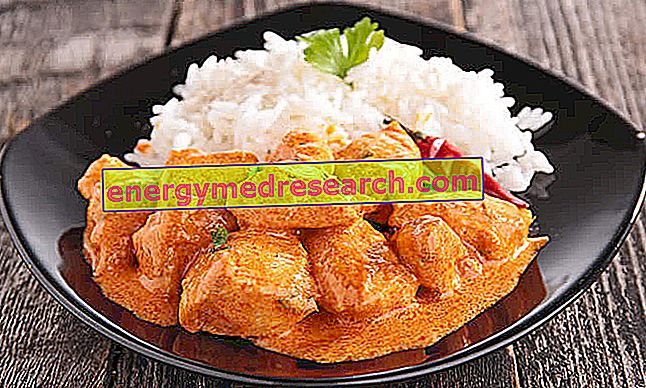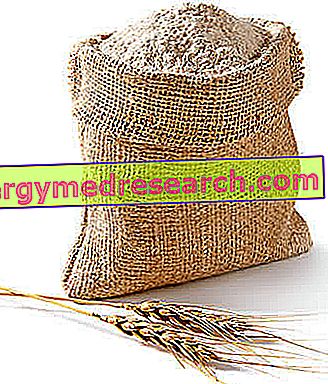Generality
Curry chicken is a typically Asian ethnic recipe, although it boasts many regional and national interpretations. In fact, the variations of curry chicken are as many as the places where the two main ingredients are spread: chicken and curry.

While the chicken, good or bad, remains a constant of the recipe, the curry, the other spices and the vegetables that compose it represent variables that differentiate many formulas.
Curry is a spice - or rather a mixture of spices and aromas - typically Indian; its basic composition includes: coriander, curcuma, black cumin, sometimes saffron, cayenne pepper, ginger, cardamom mustard, tamarind and ginger.
In its places of origin, curry has an importance very similar to that of "pasta" for Italians; therefore, in a similar way, there are countless types. Trying to simplify the classification of this food as much as possible, it could be divided into three commercial forms: mild, hot and very hot (which differ in the degree of hotness).
Notes on Ingredients
As anticipated, the recipes for preparing curry chicken are really many. Below we will make a brief overview of the most widespread ingredients, so as to favor the orientation of readers to the formula that comes closest to personal tastes.
Dressing grease : contrary to what one might believe, the dressing grease originally used for this recipe is ghee, or clarified butter (deprived of water and protein component). In China, seed oil is mainly used, while in South America and Africa, that of Palma. It is useless to specify that, using the extra virgin olive oil, a considerable nutritional advantage would be gained; however, the final taste would be compromised, which is why it is advisable to use an oil with the most delicate taste possible.
Chicken : despite the modern recipes of curry chicken involve the use of the breast, originally, the animal was used throughout the body (divided into four or eight parts), including skin. Here is the curry chicken can be interpreted in two almost opposite ways: as a buffet recipe (to eat comfortably standing, with the sole use of the fork), or as a dish that requires the use of the knife and possibly even hands, to carefully remove the bones of the animal; obviously, the cooking times of the two types are quite different (much longer than for the whole piece chicken).
Curry : without going into detail, the distinction made above applies: mild, hot and very hot.
Vegetables : curry chicken vegetables can be the most diverse. In general, contemporary recipes mention: onion, carrots, peppers (red and green), tomatoes, aubergines and courgettes. All vegetables must be carefully washed and cleaned; onions and tomatoes also peeled.
Fruit : the fruit for the curry chicken is considered the most bizarre ingredient category; it is a group of foods that, in Italian gastronomy, is rarely associated with savory dishes. In particular, in the curry chicken the renette apples are preferred.
Some people also use lemon, both bark and juice. On the other hand, the coconut is more niche, where the white shelled and peeled pulp is mixed and soaked; the infusion water should not be eliminated, but rather used to wet the chicken during the long cooking (like broth).
Spices, aromatic herbs and other aromas : it is by far the most heterogeneous category; in the simplest recipes are added: black pepper, garlic, bay leaves, red pepper, mustard seeds, cumin, tarragon, cardamom and sometimes parsley. However, by carrying out more in-depth research, it is possible to find many products of Asian origin even quite curious.
Cooking liquid : often, the water released from the ingredients is not sufficient to complete the cooking of the curry chicken. To continue the heat treatment, some use only hot water, some others the broth or the coconut soaking water; personally, I believe that a light background of chicken produced with bones and a bit of animal scraps (slightly thickened with rice flour or potato starch), may be the most suitable solution.
NB . Curry chicken is often accompanied by boiled rice, preferably cooked in the pilaf style.
For more information on the preparation process, consult Alice's video recipe.

Nutritional Features
Reading carefully what has been written so far, the heterogeneity in the chemical-nutritional composition of the various recipes should be clear.
A "simple" curry chicken, with little oil / butter and free of fat ingredients such as: chicken skin, coconut, etc., represents an extremely light, hypo or normal-lipid and low-calorie recipe .
On the contrary, by adding the coconut and making a significant use of seasoning fats, perhaps without removing the skin from the chicken, the recipe can become extremely energetic (reaching almost 50% of the calories from lipids). The curry fatty chicken acids can be predominantly monounsaturated, in the case where the chest is used without skin, the extra virgin olive oil but without coconut, or tendentially saturated preferring the butter, the animal with the skin and the addition of coconut.
Curry chicken is a meat dish, therefore it provides a good amount of high biological value protein. As for carbohydrates, on the other hand, they play a minority caloric role and tend to consist of the fructose of vegetables and fruit; a small fraction could be of starch, respectively contained in the flour eventually used to tie the light bottom of the chicken.
The fibers are present but in quantity relative to the plants used. Regarding the cholesterol content, this varies depending on the presence or absence of clarified butter and the animal's skin.
Regarding vitamins, in the curry chicken there is no lack of various molecules of group B, C (however degraded during cooking) and carotenoids (pro vitamin A). Speaking of mineral salts, instead, the concentrations of potassium and iron stand out.
Curry chicken is known for the remarkable presence of various types of antioxidants, although most of these tend to be degraded due to the heat treatment to which the food is subjected.
The curry chicken in a light version is suitable for most diets, except for breastfeeding women; this is because the various aromatic components tend to pass into breast milk and sometimes worsen the palatability compromising the infant's nutrition.
Video Recipe
Curry Chicken - Light Bocconcini
X Problems with video playback? Reload from YouTube Go to Video Page Go to Video Recipes Section Watch the video on youtube



